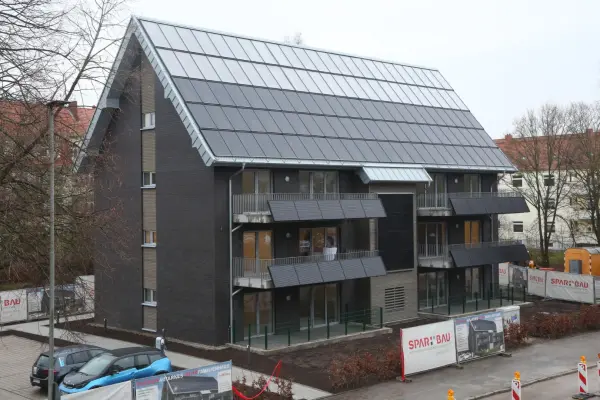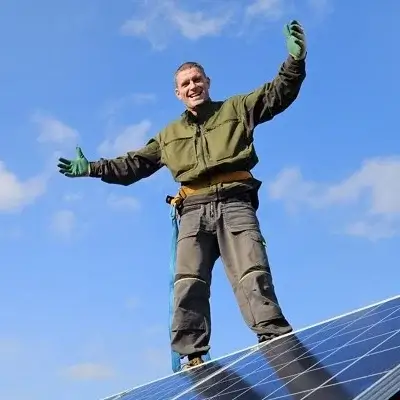The construction revolution has begun. In 2025, energy-efficient housing Europe transformed from experimental technology into a mandatory standard worth $1.2 trillion in investments. European countries are implementing zero-energy homes, turning every building into a mini power plant capable of providing itself with its own energy and even selling surplus to neighbors.
Can you imagine a house that works like a living organism? It should be noted that European energy efficiency standards have changed the perception of housing forever. Passive house is no longer a luxury — it's the new norm. Self-sufficient house combines smart home energy saving with living comfort.
«In practice working with private clients, I notice: owners of energy-efficient housing save up to $2,000 per year on utility bills. The price of an energy-saving house pays off in 7-10 years, but comfort is felt from day one», — notes Marcus Stein, certified consultant at the Passivhaus Institute.
Current EU Standards: From Commitments to Reality
At the core of this transformation lies a document that transformed voluntary recommendations into mandatory technical requirements.
EPBD Directive 2018/844: Revolutionary Requirements
 The Energy Performance of Buildings Directive establishes clear frameworks. Since 2021, all new buildings must comply with the nearly zero energy buildings (nZEB) standard. Not just a recommendation. Legal obligation with fines up to €50,000.
The Energy Performance of Buildings Directive establishes clear frameworks. Since 2021, all new buildings must comply with the nearly zero energy buildings (nZEB) standard. Not just a recommendation. Legal obligation with fines up to €50,000.
It is known that energy certification of buildings has become a cornerstone of European policy. In practice, I often notice: buyers study the energy efficiency class of a building more carefully than the apartment layout. Each building receives a rating from A to G, where class A means practically zero energy consumption. In Germany, you cannot sell or rent real estate without an energy passport.
According to the official website of the European Commission, from 2030 the standard for new buildings will be raised from «nearly zero energy consumption» to «zero emissions».
Technical Insulation Requirements: New Standards
Modern European standards building thermal insulation require revolutionary solutions. For roofs, energy-saving house needs insulation 19-24 cm thick depending on the material — modern insulation materials with λ=0.032 W/m²K allow reducing thickness to 19 cm while maintaining R=6 m²K/W.
Walls require insulation of 15-20 cm. Windows — triple glazing with heat transfer coefficient for glazing Ug ≤ 0.5 W/m²K and for the entire window Uw ≤ 0.8 W/m²K. Taking into account structural features, some projects use vacuum glazing only 8 mm thick, but with insulation properties of a 40-centimeter wall.
It is critically important to eliminate thermal bridges — areas of increased thermal conductivity in the structure. Even a small thermal bridge can increase heat loss by 10-15% and lead to condensation formation.
Comparison of old and new standards clearly demonstrates the scale of technological changes.
| Building Element | Old Standard | New EU Standard | Energy Savings |
|---|---|---|---|
| Roof | 10 cm insulation | 24 cm insulation | 60% |
| Walls | 8 cm insulation | 15-20 cm insulation | 45% |
| Windows | Double glazing Uw=2.0 | Triple with gas Uw≤0.8 | 30% |
| Ventilation | Natural | With heat recovery | 75% |
This data shows how radical changes in building standards make it possible to create a self-sufficient house with minimal energy consumption. Each building element becomes an active participant in energy saving.
Green Technologies in Construction: Renewable Energy Sources
Strict insulation and airtightness standards — are only the first half of the equation; the second lies in where the house gets energy for its needs.
Renewable Energy Sources in Residential Buildings
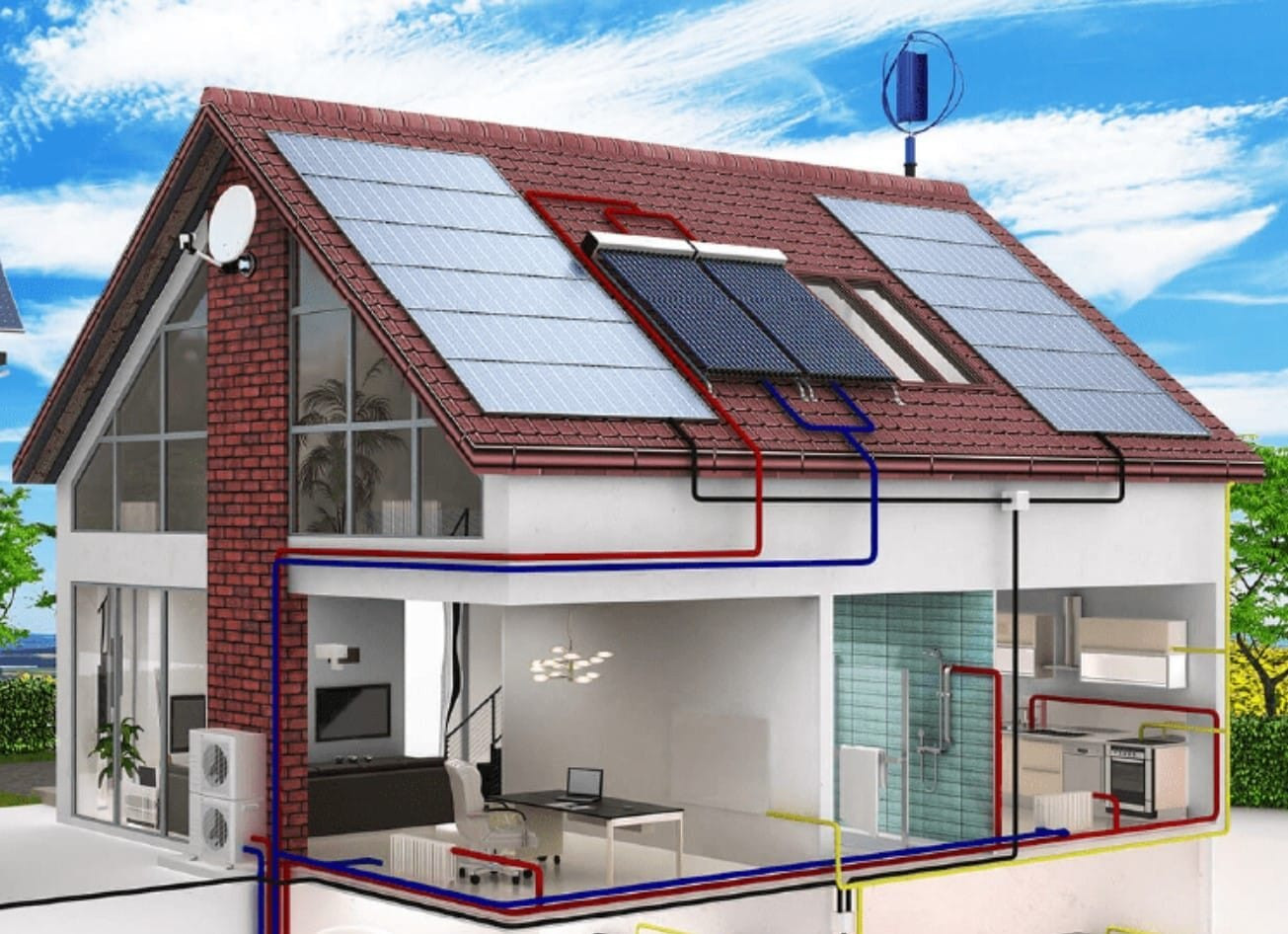 Solar panels house transform into a power plant. In one recent project in Denmark, a residential complex of 50 apartments produces 15% more energy than it consumes.
Solar panels house transform into a power plant. In one recent project in Denmark, a residential complex of 50 apartments produces 15% more energy than it consumes.
Surplus is sold back to the grid, bringing residents additional income of $300-500 per year. Geothermal heat pumps use stable ground temperature. At a depth of 1.5-2 meters, the temperature is +8-12°C depending on the climate zone (in Scandinavia +6-8°C, in Southern Europe +10-14°C), which turns the ground into a giant heat battery. The system effectively works as a natural air conditioner — cools in summer, heats in winter.
«At one of the facilities last season, we installed a hybrid system: solar panels plus geothermal pump. The house became 95% energy independent. The remaining 5% is covered by a Tesla Powerwall battery», — says engineer Lars Andersen from Nordic Energy Solutions company.
Intelligent Control Systems: The Brain of the House
 Home automation works like the human nervous system. Smart thermostats learn residents' habits, remembering every detail.
Home automation works like the human nervous system. Smart thermostats learn residents' habits, remembering every detail.
The system knows: at 7 AM the family wakes up, by 8:30 children go to school, at 6 PM everyone returns home. Heating turns on 30 minutes before arrival, turns off an hour after departure. Thus, intelligent control systems save up to 25% energy without compromising comfort.
Controlled ventilation with heat recovery works like the lungs of the house. The system takes heat from exhaust air, transfers it to fresh outdoor air. Efficiency of quality systems reaches 85-95% in laboratory conditions, but in real operation is 75-85% due to imperfect air exchange and filter maintenance.
Humidity control in airtight houses is critically important. Without proper ventilation, relative humidity can reach 70-80%, leading to mold formation and microclimate deterioration.
Development Plans for 2030-2050: Ambitious EU Goals
The path to climate neutrality Europe has broken down into clear stages, the first of which is already launched and determines the development of the construction industry for the coming years.
"Fit for 55" Program: Intermediate Stages
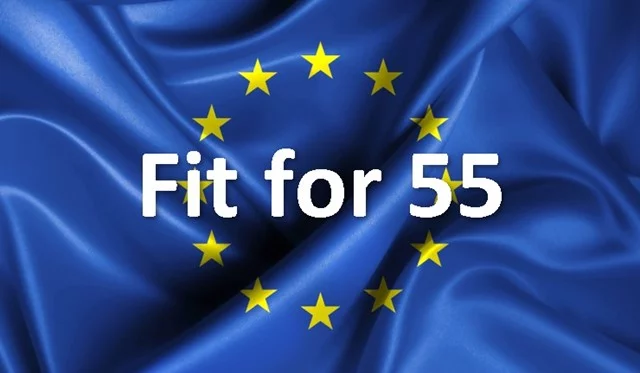 The European Green Deal sets ambitious plans. By 2030, the EU must reduce CO2 emissions by 55% compared to 1990.
The European Green Deal sets ambitious plans. By 2030, the EU must reduce CO2 emissions by 55% compared to 1990.
The building sector accounts for 40% of energy consumption — here lies enormous potential. Thus, the plan provides for annual renovation of 3% of existing housing stock, which means modernizing 35 million homes by 2030. Investments will amount to €275 billion — the largest program in history.
Zero Emission Buildings Standard by 2050: The Future is Near
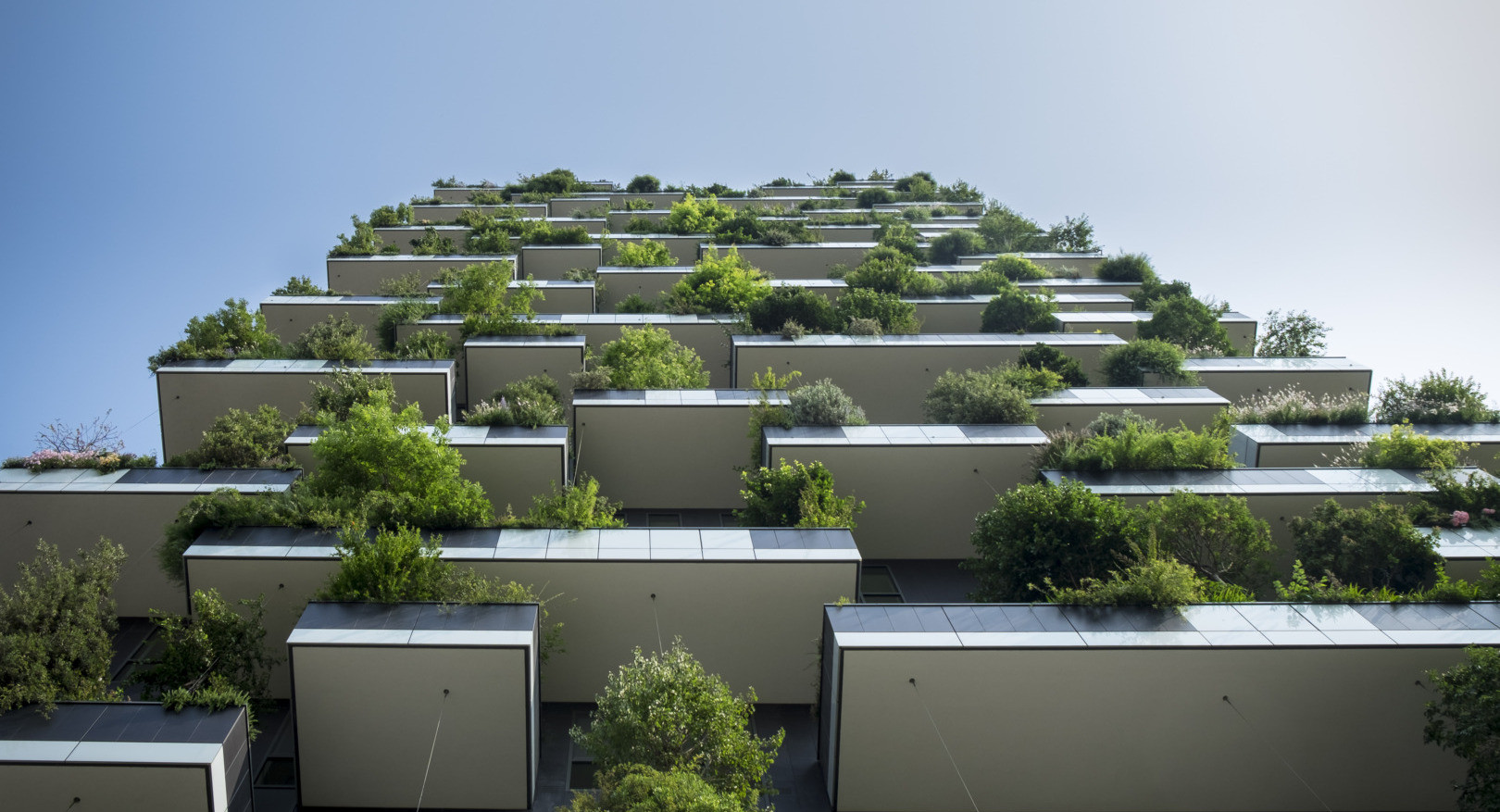 In practice working with European projects, we often encounter a new concept — Zero Emission Buildings. This is the next level after zero energy consumption house.
In practice working with European projects, we often encounter a new concept — Zero Emission Buildings. This is the next level after zero energy consumption house.
The house not only does not consume energy from outside, but also has zero carbon footprint throughout the entire life cycle — from material production to disposal. The task is ambitious. But technically feasible today.
Ambitious plans for European residential construction require colossal investments and demonstrate the scale of upcoming changes.
| Period | Target Indicator | Status | Investments |
|---|---|---|---|
| 2025 | All new buildings — nZEB | In progress | €50 billion |
| 2030 | 3% renovation per year | Planned | €275 billion |
| 2040 | 50% buildings — energy positive | Goal | €500 billion |
| 2050 | 100% Zero Emission Buildings | Final goal | €1 trillion |
These figures show the unprecedented scale of European transformation of the housing sector and readiness to invest in a sustainable future.
Experience of European Countries: From Scandinavian Fjords to Alpine Valleys
Among European countries, there are recognized leaders in different aspects of green construction, and the first place in wind energy use is firmly held by the country of Vikings.
Denmark: Where Wind Works for the House
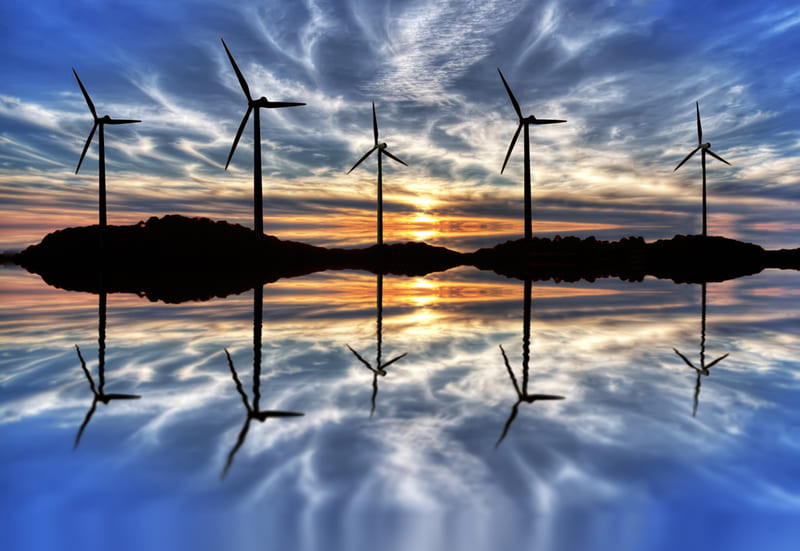 Denmark produces 50% of electricity from wind — a world record. In Copenhagen residential areas, micro wind generators are integrated into building architecture as decorative elements.
Denmark produces 50% of electricity from wind — a world record. In Copenhagen residential areas, micro wind generators are integrated into building architecture as decorative elements.
The Ørestad project demonstrates the use of urban wind turbines with 2-5 kW power, which in real conditions cover 5-10% of apartment building needs due to turbulence in urban development. Taking into account structural features, Danish architects place turbines in aerodynamic gaps between buildings, where wind speed increases 1.5-2 times.
Netherlands: Floating Self-Sufficient Houses
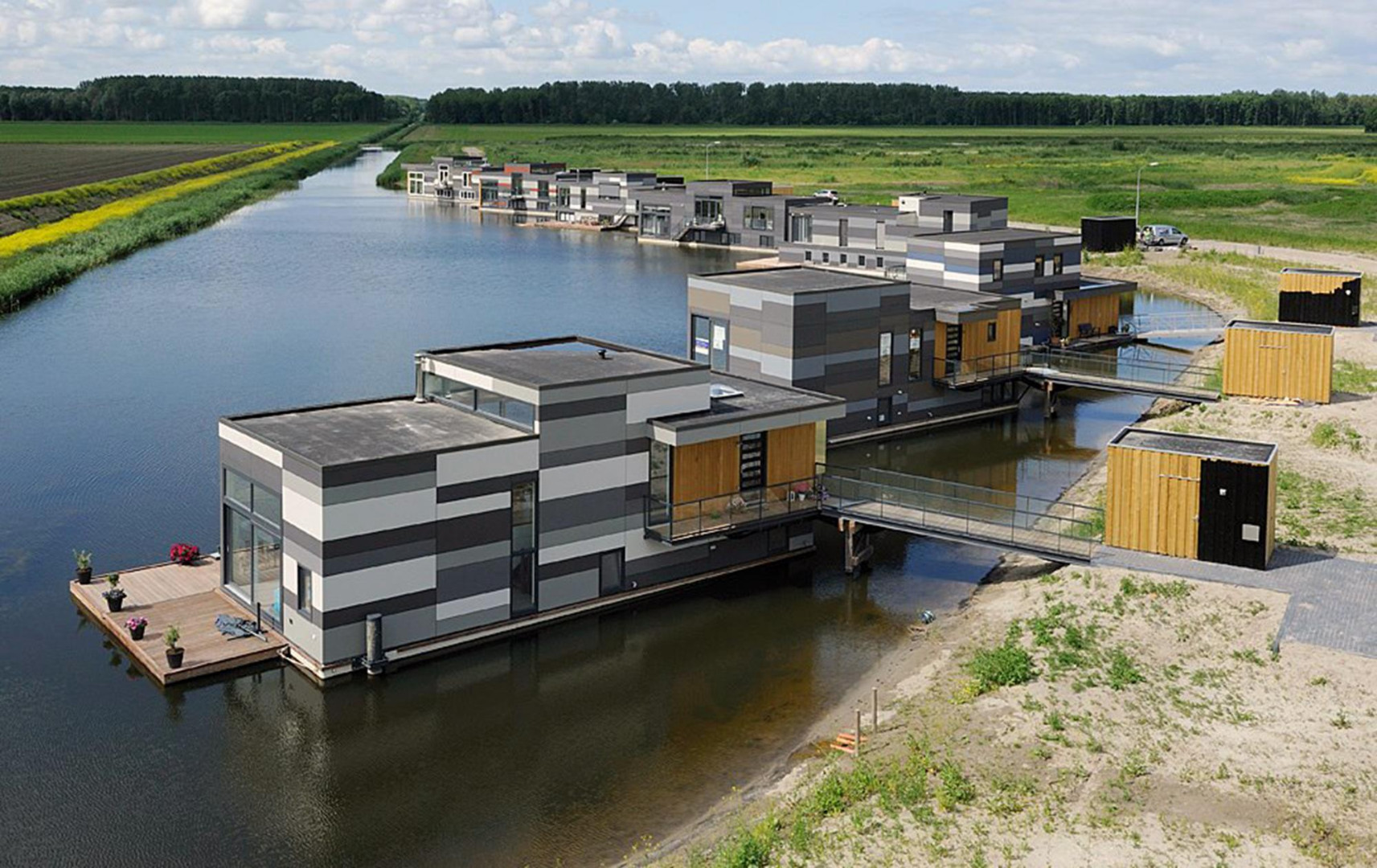 In Amsterdam, the Waterplein district shows the future of adaptive construction. Floating houses with solar panels and geothermal pumps consume 40-50% less energy than traditional buildings due to optimized orientation and compactness.
In Amsterdam, the Waterplein district shows the future of adaptive construction. Floating houses with solar panels and geothermal pumps consume 40-50% less energy than traditional buildings due to optimized orientation and compactness.
The technology is relevant for coastal regions where sea level rises 3-4 mm annually. It is known that such low-energy buildings can function autonomously for up to 6 months without connection to external networks.
Austria: Social Energy-Efficient Housing for All
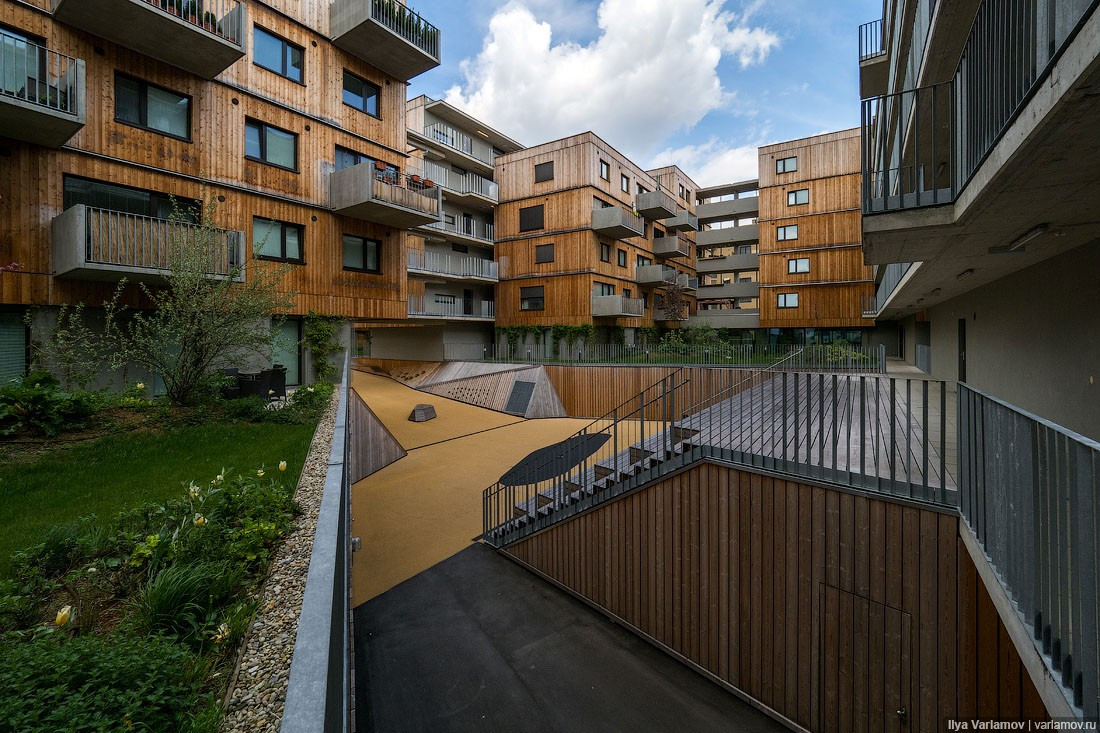 Vienna built 63% of municipal housing according to passive house standard. The program is available to families with income up to €60,000 per year.
Vienna built 63% of municipal housing according to passive house standard. The program is available to families with income up to €60,000 per year.
A 70 m² apartment costs €800 per month including utilities — 40% cheaper than market prices. At one of the facilities last season, they installed a system where residents can buy energy-efficient house in installments for 25 years at 0.75% annually.
Social Justice: Energy Transition for All Population Layers
While some Europeans install solar panels and smart thermostats, others are forced to choose between food and heating — and there are more such households than commonly thought.
Energy Poverty Problem: When Heat is Luxury
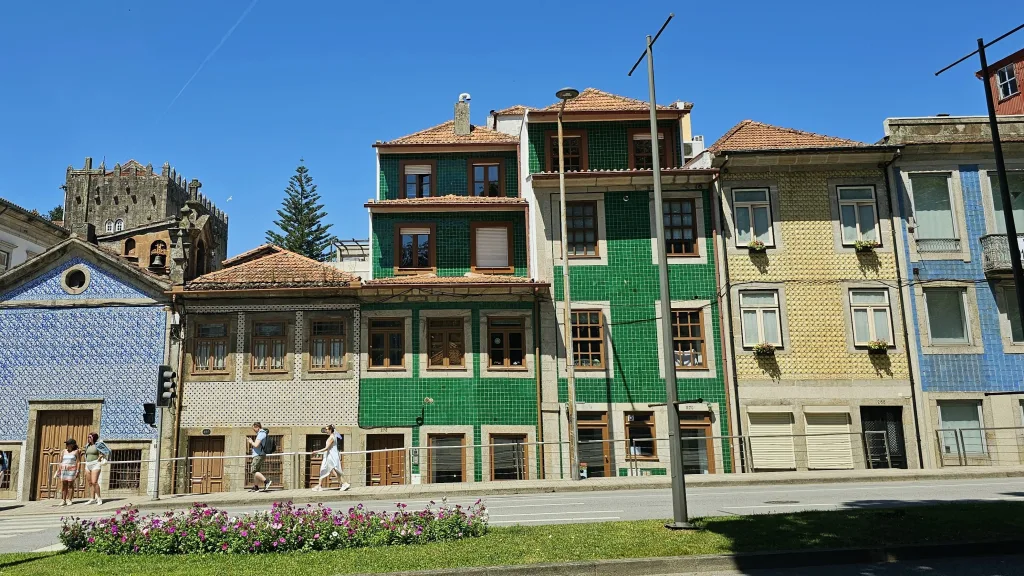 In the EU, 50 million households suffer from energy poverty — spending more than 10% of income on utilities. Old housing consumes 3-4 times more energy than energy-saving house.
In the EU, 50 million households suffer from energy poverty — spending more than 10% of income on utilities. Old housing consumes 3-4 times more energy than energy-saving house.
Modernization requires €15,000-30,000 — an unaffordable sum for many families. A vicious circle emerges: those who most need energy saving cannot afford it.
Support Programs: From Subsidies to Interest-Free Loans
France launches the Ma Prime Rénov' program with a budget of €2 billion annually. Families with income less than €27,000 receive subsidies up to 90% of energy modernization cost.
Spain provides interest-free loans for 15 years for solar panel installation. Thus, smart home installation becomes accessible to the middle class without down payment.
Practical Guide: How to Start for Homeowner
Years of experience with European projects have shown: without a clear action algorithm, even the most expensive technologies do not give expected results.
Step-by-Step Energy Efficiency Modernization Plan
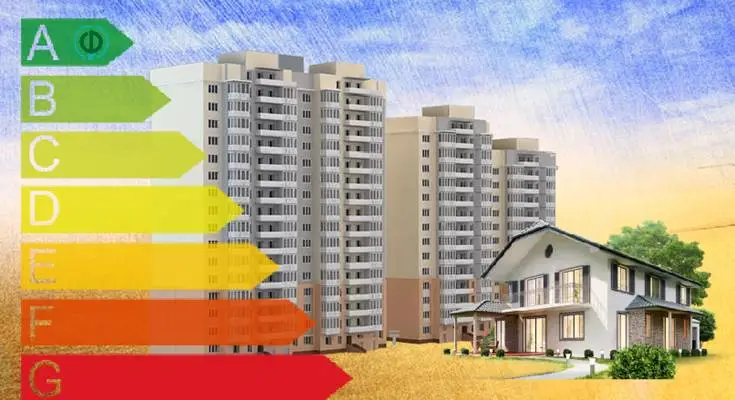 Energy audit — the first mandatory step. Professional survey costs €300-800, but identifies points of maximum heat loss.
Energy audit — the first mandatory step. Professional survey costs €300-800, but identifies points of maximum heat loss.
In Germany, the service is subsidized by the state by 80%. The sequence of work is critical for the result. First insulation — roof, walls, basement, then window and door replacement, lastly — heating and ventilation systems. Wrong sequence reduces efficiency by 20-30%.
Budget Solutions: From Pennies to Major Investments
Basic energy saving measures are available to every homeowner, regardless of financial capabilities. Even small steps give noticeable results.
| Budget | Measures | Energy Savings | Payback Period |
|---|---|---|---|
| $500-2,000 | Programmable thermostats, weather stripping, LED lighting | 10-15% | 1-2 years |
| $5,000-15,000 | New windows, attic insulation, smart systems | 25-35% | 3-5 years |
| $15,000-40,000 | Heat pump, solar panels, comprehensive insulation | 50-70% | 5-8 years |
| $40,000+ | Complete reconstruction to passive house standard | 80-90% | 8-12 years |
A phased approach allows distributing investments and starting to save from the first steps. It is known that solar panel installation pays off fastest in southern regions of Europe.
Checklist: What to Check Before Construction or Renovation
Before starting work, it is important to consider all aspects of creating a self-sufficient house. Every detail affects final energy efficiency.
Design and Planning:
- Get energy audit of existing building
- Study local subsidy programs and preferential lending
- Choose certified architect with passive house construction experience
- Include 10-15% in budget for unforeseen expenses
- Consider building orientation by cardinal directions for solar panels
Materials and Technologies:
- Choose insulation with thermal conductivity coefficient λ ≤ 0.035 W/m²K
- Install windows with Uw ≤ 0.8 W/m²K (glazing Ug ≤ 0.5 W/m²K)
- Provide ventilation system with heat recovery (efficiency >80% in real conditions)
- Calculate heat pump power based on actual building heat losses
- Consider building orientation: south facade for solar panels, minimum windows from north
- Eliminate thermal bridges at structural connections
Quality Control:
- Conduct airtightness test of envelope (n50 ≤ 0.6 h⁻¹ for passive house)
- Perform thermal imaging survey after work completion
- Obtain energy certificate class A or B
- Set up humidity control system (optimally 40-60%)
- Train residents in proper use of intelligent control systems
Success Case: SOPP Project in Norway
In Norwegian Lillehammer, the SOPP student complex became a benchmark for self-sufficient housing. The building consumes less than 10 kWh/m² per year — 10 times below average. Solar panels, geothermal heating, smart windows with electrochromic coating work as a single organism. Students save 70% on utilities, enjoying stable temperature and absence of drafts. The project received an EU grant and became a model for Scandinavia.
Financial Instruments and Government Support
Ambitious plans require serious money, and the EU approaches this issue systematically — creating a financial ecosystem to support energy transition.
European Financing Programs
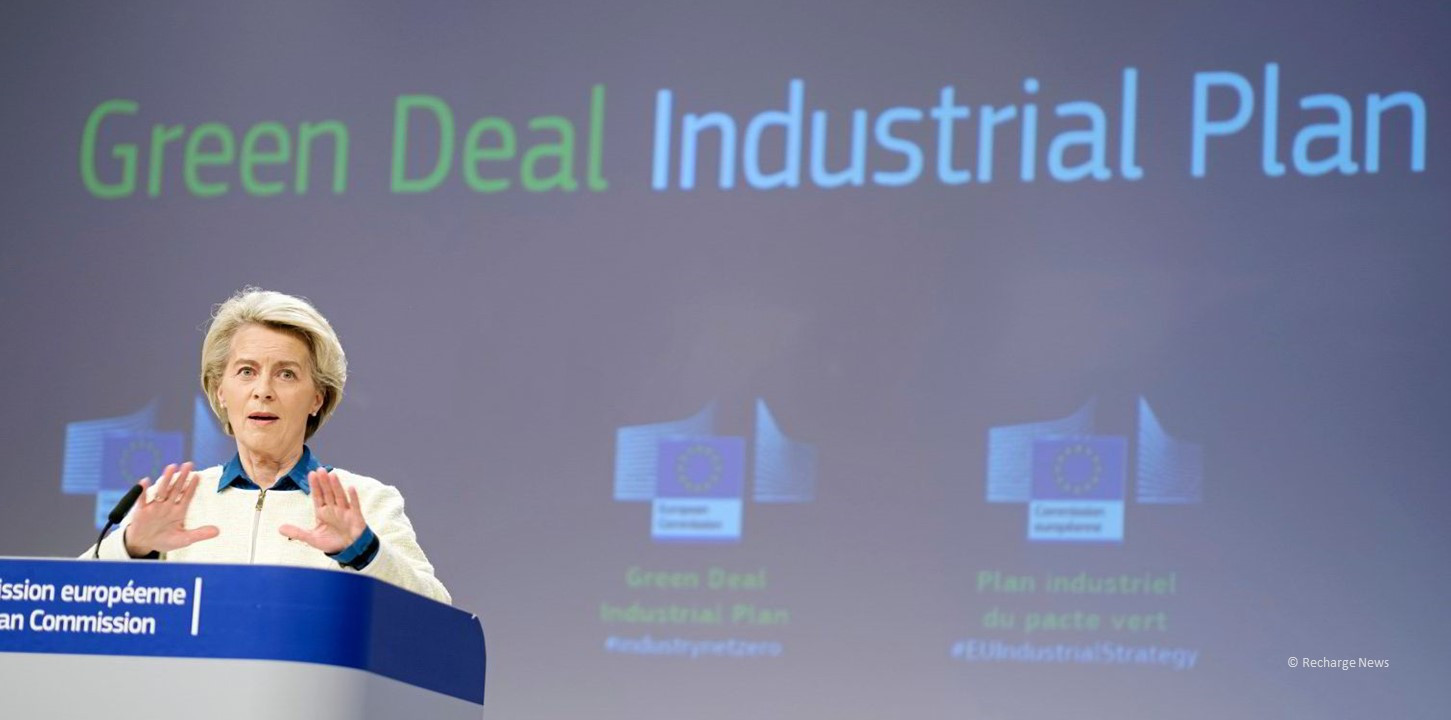 Green Deal Industrial Plan EU allocates €270 billion by 2030 for green transition. LIFE+ program provides grants up to €2 million for innovative energy efficiency projects.
Green Deal Industrial Plan EU allocates €270 billion by 2030 for green transition. LIFE+ program provides grants up to €2 million for innovative energy efficiency projects.
European Investment Bank lends to projects at 0.5-1.5% annually. Taking into account structural features of each country, conditions can vary significantly even within one region.
Obstacles and Practical Solutions
Beautiful theory crashes against harsh reality: most projects stall not due to technical difficulties, but due to banal lack of funds.
Financial Barriers: How to Overcome Them
Passive house construction costs 15-25% more than conventional depending on region and project complexity. But European banks offer "green mortgages" at reduced interest.
In the Netherlands, the difference can reach 0.5 percentage point — savings of $5,000-8,000 over 20 years of credit. Thus, additional investments in energy efficiency are partially compensated by preferential financing. Real payback periods are 7-15 years depending on local tariffs, climate and execution quality.
Technical Challenges: Precision Decides Everything
Envelope airtightness requires surgical precision. One small gap nullifies all energy saving efforts.
Therefore, Germany mandatorily conducts Blower Door Test — building airtightness test with standard n50 ≤ 0.6 h⁻¹ for passive house (for comparison: ordinary houses have 3-10 h⁻¹). Passivhaus Institute as an independent research organization plays a key role in developing the only internationally recognized standard for energy-efficient construction.
«Many of my clients are initially skeptical about additional costs. However, when they see the result — savings up to 80% on heating and stable temperature 21-22°C year-round without drafts — they become active advocates of energy efficiency», — notes architect Anna Hansen from Copenhagen.
Legislative Initiatives by Country
In addition to general European initiatives, individual countries adopt their own radical measures — and here the French turned out to be the most decisive.
France: Ban on Energy-Wasteful Housing
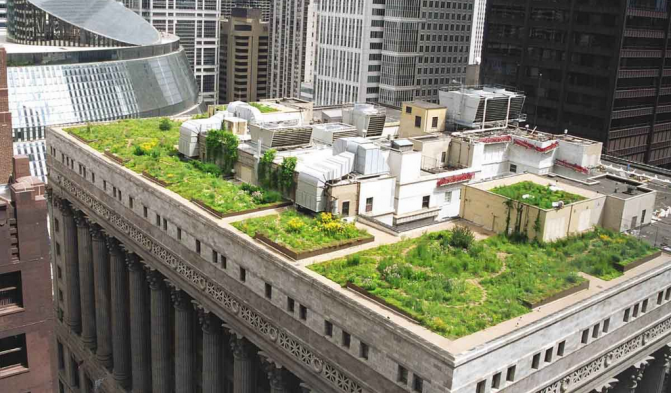 France tightens requirements radically. From 2025, it is prohibited to rent class G housing. By 2034, the ban will extend to classes F and E. This will affect 4.8 million apartments — a massive forced modernization program.
France tightens requirements radically. From 2025, it is prohibited to rent class G housing. By 2034, the ban will extend to classes F and E. This will affect 4.8 million apartments — a massive forced modernization program.
Germany: Federal BEG Program
 Bundesförderung für effiziente Gebäude (BEG) — federal support program. Subsidies cover up to 45% of energy modernization costs. For energy-efficient housing design, an additional 50% of consulting services cost is allocated.
Bundesförderung für effiziente Gebäude (BEG) — federal support program. Subsidies cover up to 45% of energy modernization costs. For energy-efficient housing design, an additional 50% of consulting services cost is allocated.
«Initially was skeptical about spending additional €20,000 on "bells and whistles". But electricity bills dropped from €180 to €45 per month. Paid off in 8 years, and comfort is priceless», — shares experience Frank Müller, owner of passive house in Munich.
Future Technologies: Already in Our Homes
The revolution in energy efficiency is accomplished not only by control systems, but also by building materials themselves, which have gained the ability to respond to environmental changes.
Smart Materials with Variable Properties
Building energy balance can be regulated automatically. Electrochromic windows change transparency depending on illumination.
Thermally active concrete structures accumulate heat during day, release at night. It is known that such thermal mass can maintain comfortable temperature for up to 18 hours without additional heating.
Artificial Intelligence: When House Thinks Itself
Low-energy building becomes smarter every day. AI analyzes weather forecasts, electricity prices, residents' habits.
The system makes thousands of micro-decisions daily: when to turn on boiler, charge electric car, sell surplus energy to grid. In practice, I often notice: owners of such systems save additional 15-20% energy through operation mode optimization.
Economic Efficiency: Numbers and Practice
Thermal mass of modern buildings allows accumulating energy for 24-48 hours. In Denmark, houses with high thermal inertia save additional 15-20% energy through effective use of daily temperature fluctuations.
Primary energy consumption in European nZEB houses is less than 50 kWh/m² per year. For comparison: typical 1980s house consumes 200-300 kWh/m² per year — savings of 4-6 times. Can you imagine the size of monthly bills?
Conclusion
Europe demonstrates: the future of housing — these are energy-independent, comfortable, ecological houses. Technologies have matured. Standards are adopted. Financing is secured.
Green technologies construction have stopped being a dream — this is a new reality that pays off, brings comfort and preserves the planet for future generations. Zero energy consumption house is no longer science fiction, but a practical solution for millions of families.
European experience shows: revolution in residential construction is not only possible, but inevitable. The only question is whether you will become part of this movement today or will catch up tomorrow?
